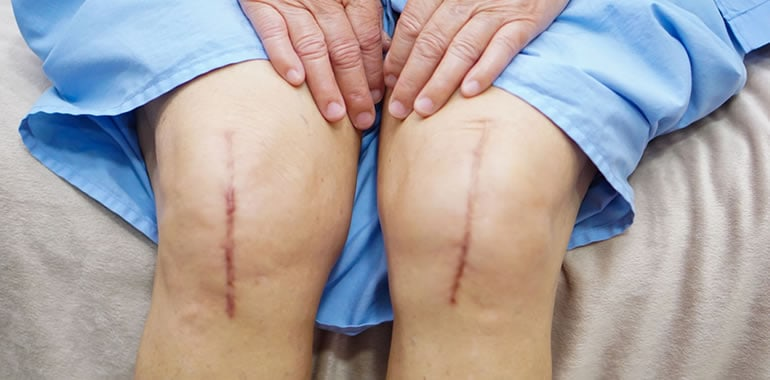Knee replacement surgery is a procedure designed to alleviate knee pain and restore joint function. When nonsurgical treatments are no longer effective, a medical professional may suggest this surgical option. Understanding the procedure and the recovery process can help individuals prepare for the journey ahead.
What Is Knee Replacement Surgery?
Knee replacement surgery is a surgical procedure to repair a knee damaged by arthritis or injury. The goal is to relieve pain and improve the knee’s function. During the operation, a surgeon removes damaged cartilage and bone from the surface of the knee joint. These surfaces are then replaced with artificial components, called prostheses.
The prosthesis is designed to replicate the natural movement of the knee. It typically consists of metal and plastic parts. These components are attached to the femur, tibia, and patella. The type of procedure can vary. The choice between a total or partial replacement depends on the extent of the damage within the knee.
Who Benefits From It?
Individuals who experience persistent knee pain and mobility issues that interfere with daily activities may be candidates for this surgery. One of the most common reasons for knee replacement is osteoarthritis, a degenerative condition where the cartilage that cushions the knee joint wears away over time. This leads to bone-on-bone friction, causing pain and stiffness.
Other conditions that can lead to the need for knee replacement include rheumatoid arthritis, an autoimmune disease that causes inflammation in the joints. Post-traumatic arthritis can develop after a serious knee injury. When conservative treatments like physical therapy, medications, injections, and lifestyle modifications fail to provide adequate relief, a surgeon might recommend a knee replacement. A thorough evaluation by an orthopedic surgeon will determine if this procedure is a suitable option for a patient’s specific circumstances.
What Should You Expect?
The process of knee replacement surgery involves distinct phases, each with its own set of expectations for the patient. Preparation may begin weeks before the scheduled operation. Your surgeon will conduct a comprehensive medical evaluation, including blood tests, to assess your overall health. You may be advised to stop taking certain medications. It is also beneficial to prepare your home for your return.
During Your Hospital Stay
The surgery itself usually lasts a few hours. The length of the hospital stay can vary, but patients often begin to move and walk with assistance shortly after the operation. A physical therapist will guide you through exercises designed to restore movement and strength to your new knee. Pain management will be a focus, with medical staff providing medication to keep you comfortable.
After You Return Home
Recovery continues at home. Adherence to the prescribed physical therapy regimen is a primary component of the healing process. These exercises are designed to improve range of motion, build muscle strength, and help you return to your normal activities. You will likely use a walker, crutches, or a cane for a period as you regain stability. Following your surgeon’s guidance on wound care, activity levels, and follow-up appointments will support a successful outcome.
Speak Further With Your Surgeon
Each patient’s journey is unique and depends on their specific health condition and circumstances. For personalized information and to understand the risks and benefits as they apply to you, a detailed discussion with your orthopedic surgeon is necessary. Your surgeon can provide answers to your questions and guide you through every step of the process.

